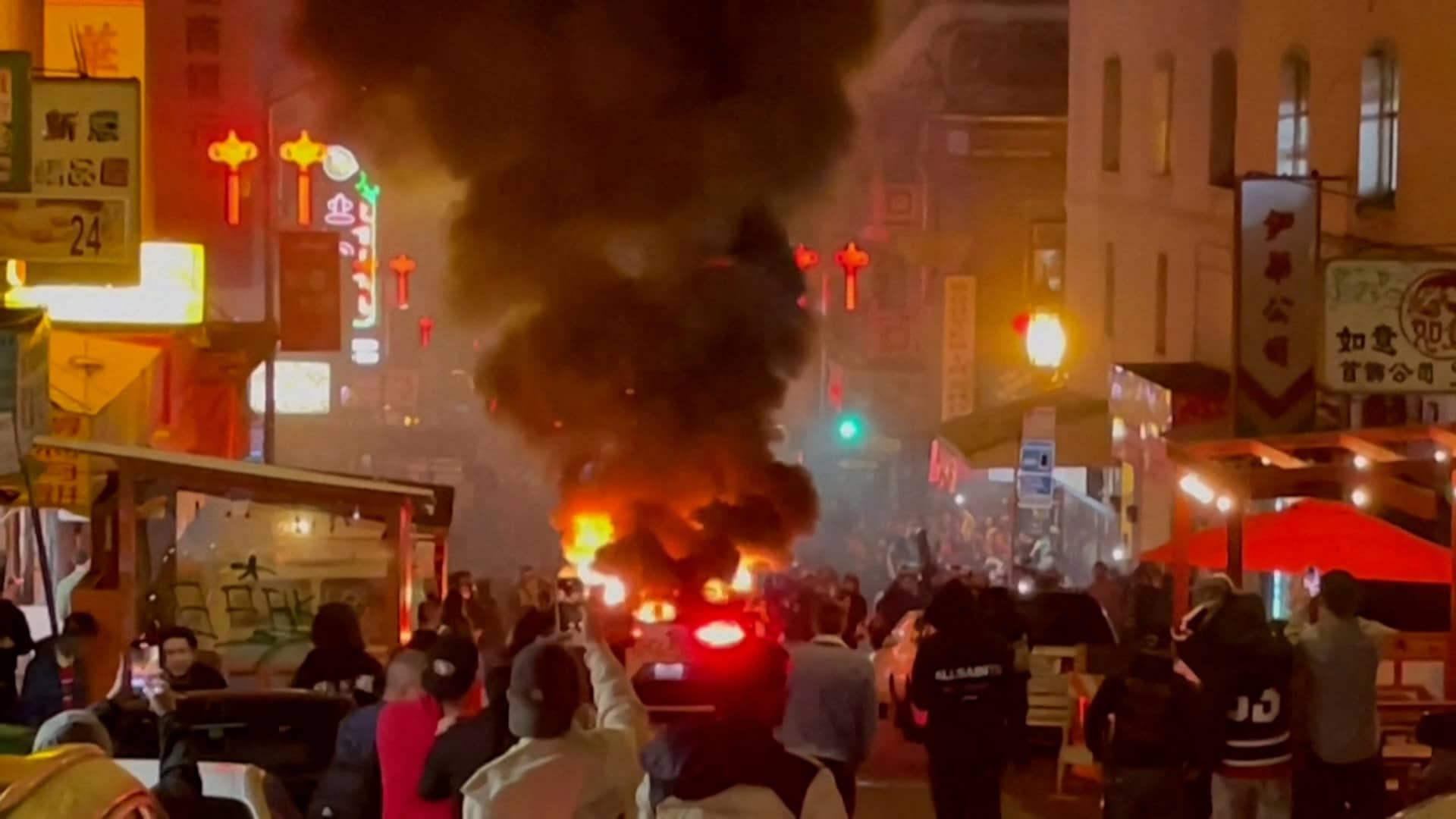
A Waymo self-driving robotaxi, owned by Alphabet’s autonomous driving unit, is engulfed in flames after the San Francisco Fire Department said in a statement on social media that fireworks were thrown inside the vehicle, in San Francisco, California, on Feb. 10, 2024 in a still image from video.
Michael Vandi | Via Reuters
A crowd vandalized a Waymo self-driving vehicle and set it on fire by throwing a firework inside the car in San Francisco on Saturday, said Waymo, which is owned by Alphabet.
This is not the first time people have attacked a self-driving car, but the severity of the incident may illustrate growing public hostility toward self-driving cars following a pedestrian-dragging accident last year involving a self-driving vehicle operated by General Motors‘ Cruise unit.
Waymo said that around 9 p.m. local time on Saturday (0500 GMT Sunday), someone in a crowd broke a car window and threw a firework inside, setting the vehicle ablaze. Waymo did not say what caused the crowd to attack the car.
Video footage on social media showed the electric vehicle burning, sending up a huge plume of black smoke.
“The vehicle was not transporting any riders and no injuries have been reported. We are working closely with local safety officials to respond to the situation,” the company said.
The San Francisco fire department said it turned over the case to the police who were investigating the cause of the attack.
The fire department on social media posted pictures of the charred remains of the car, along with saying that a firework inside the vehicle started the blaze. The San Francisco police department was not immediately available for comment.
Last week, a driverless Waymo car collided with a cyclist in San Francisco, causing minor injuries and the incident is being reviewed by the state’s auto regulator.
On Oct. 2, a pedestrian hit by another vehicle was thrown into the path of a self-driving Cruise vehicle and dragged 20 feet (6 meters).
California suspended the company’s driverless testing license, and Cruise pulled all its U.S. self-driving vehicles from testing.
